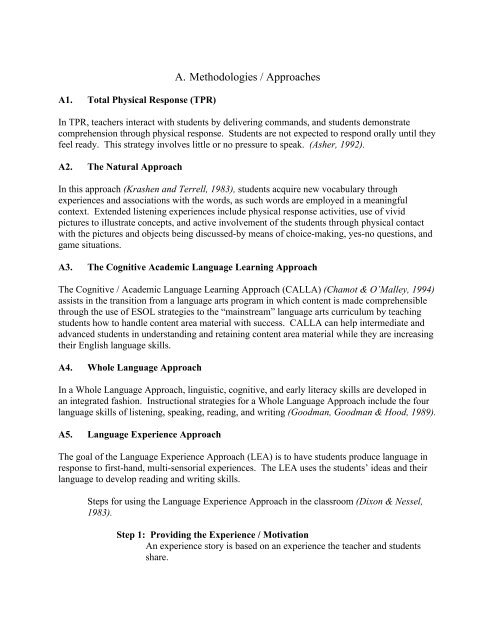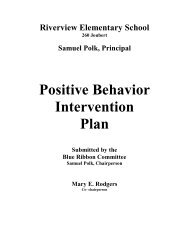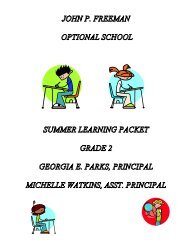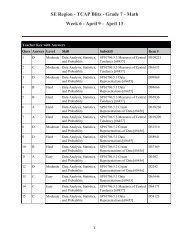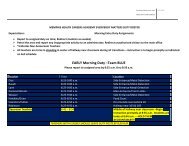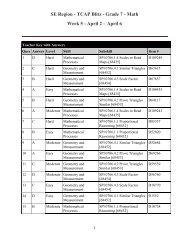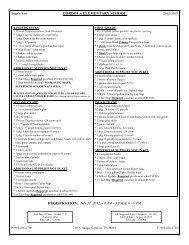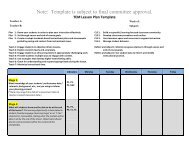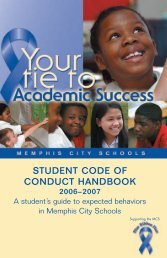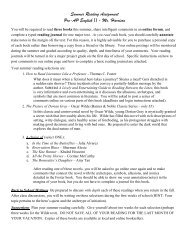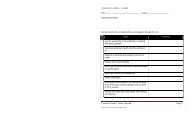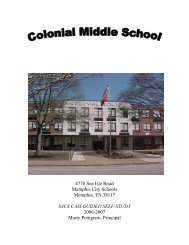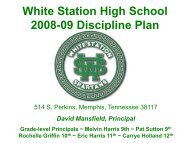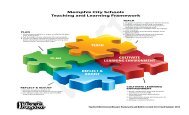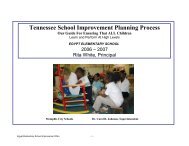ESL Strategies Chart w/ Methodologies
ESL Strategies Chart w/ Methodologies
ESL Strategies Chart w/ Methodologies
Create successful ePaper yourself
Turn your PDF publications into a flip-book with our unique Google optimized e-Paper software.
A1. Total Physical Response (TPR)A. <strong>Methodologies</strong> / ApproachesIn TPR, teachers interact with students by delivering commands, and students demonstratecomprehension through physical response. Students are not expected to respond orally until theyfeel ready. This strategy involves little or no pressure to speak. (Asher, 1992).A2. The Natural ApproachIn this approach (Krashen and Terrell, 1983), students acquire new vocabulary throughexperiences and associations with the words, as such words are employed in a meaningfulcontext. Extended listening experiences include physical response activities, use of vividpictures to illustrate concepts, and active involvement of the students through physical contactwith the pictures and objects being discussed-by means of choice-making, yes-no questions, andgame situations.A3. The Cognitive Academic Language Learning ApproachThe Cognitive / Academic Language Learning Approach (CALLA) (Chamot & O’Malley, 1994)assists in the transition from a language arts program in which content is made comprehensiblethrough the use of ESOL strategies to the “mainstream” language arts curriculum by teachingstudents how to handle content area material with success. CALLA can help intermediate andadvanced students in understanding and retaining content area material while they are increasingtheir English language skills.A4. Whole Language ApproachIn a Whole Language Approach, linguistic, cognitive, and early literacy skills are developed inan integrated fashion. Instructional strategies for a Whole Language Approach include the fourlanguage skills of listening, speaking, reading, and writing (Goodman, Goodman & Hood, 1989).A5. Language Experience ApproachThe goal of the Language Experience Approach (LEA) is to have students produce language inresponse to first-hand, multi-sensorial experiences. The LEA uses the students’ ideas and theirlanguage to develop reading and writing skills.Steps for using the Language Experience Approach in the classroom (Dixon & Nessel,1983).Step 1: Providing the Experience / MotivationAn experience story is based on an experience the teacher and studentsshare.


